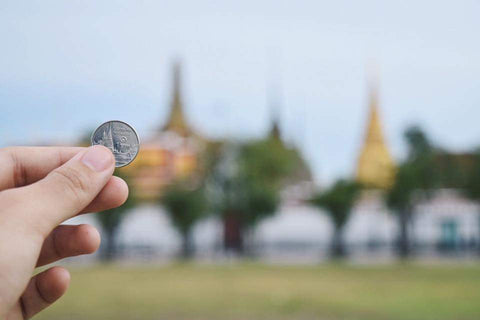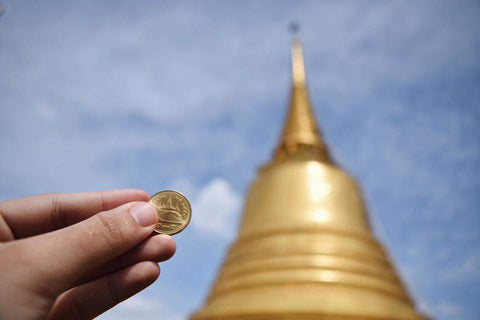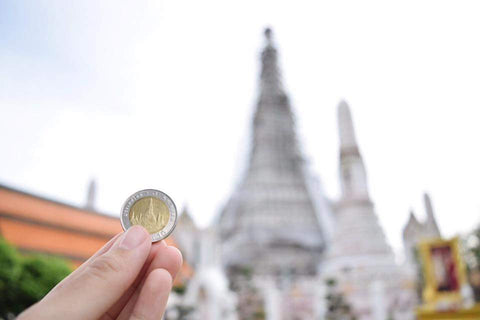No Products in the Cart
People are, more than ever, focused on money. Our focus on the value of money can be so great that we fail to recognize the elaborate art and symbolism that each monetary note represents to a culture. Consider when you travel to a new country with unfamiliar currency- you may be preoccupied with identifying the value each coin or bill represents, and fail to observe the symbolism each piece carries. In Thailand, every coin represents both monetary and cultural value.
Thai money is aesthetically pleasing- the bills are comprised of various colors and designs, and the coins are equally elaborate. Thailand has a repertoire of six coins (4 baht and 2 satang)- each adorned with a famous Thai temple. In this sense, each coin represents more than a pad thai or Chang beer- it represents the value of temples in Thai culture.
Temples (called “wats” in Thai) are integral to Thai society and represent the Buddhism practiced by the majority of the population. Historically, temples were a place of religious worship and community education, including teaching pupils to read, write and develop culturally vital artisan skills such as mural painting and sculpture. The importance of temples is evident by sheer numbers- Thailand is home to over 40,000 temples around the country. Out of thousands of temples, the six most iconic made the cut to be on the coins.
Which baht coins hold which temples? Explore below to find out more about the temples and their cultural significance.

1. The 1-baht coin is garnished with the Temple of the Emerald Buddha (Wat Phra Kaew). This temple is considered the most important in all of Thailand, and is visited by thousands of people everyday. Located on the grounds of the world famous Grand Palace, Wat Phra Kaew houses an image of Buddha carved entirely from a jade stone block. This Buddha is revered as palladium (an object that provides safety and protection) for Thailand, and is important as a national and historic symbol.

2. The 2-baht coin has two designs: a silver one and a brass colored version. Flip the coin to reveal the temple of the Golden Mount (Wat Saket), located in Bangkok. The Wat Saket is one of Thailand’s oldest temples. The iconic “golden mount” is an 80-meter tall chedi that was once the highest point in Bangkok. The chedi houses relics of the Buddha brought from India.

3. The 5-baht coin is adorned with the the Marble Temple (Wat Benjamabophit, which means fifth King in Thai). The temple was constructed in 1899 during the reign of King Rama V and is considered one of the most beautiful temples in Thailand. The ordination hall is constructed from Italian marbles slabs, which have lead to the temple being earning its name: the "Marble Temple".

4. The 10-baht coin is distinctive, with a brass colored center surrounded by a silver ring. It is appropriately adorned The Temple of Dawn (Wat Arun or locally known as Wat Chaeng) a striking temple located near the Chao Phraya River. Compared to other temples, Wat Arun is known for its unique architecture, particularly its colorful spires. Its location on the river allows for breathtaking sunrises. It is named after the Hindu god Aruna, who is commonly represented as light rays from the rising sun.
Community life in Thailand continues to be centered around its many unique temples. The temples represent a significance to Thailand's past and present culture, as they offer a modern place to gather and worship under significant historic relics and architecture. Unlike the coins they are depicted on, the temples will continue to be invaluable sites to Thai society and culture.
Sir, i have 2 bhat Thailand little bit big brass coin year i do not know thanks
Sir, i have 2 bhat Thailand little bit big brass coin year i do not know thanks